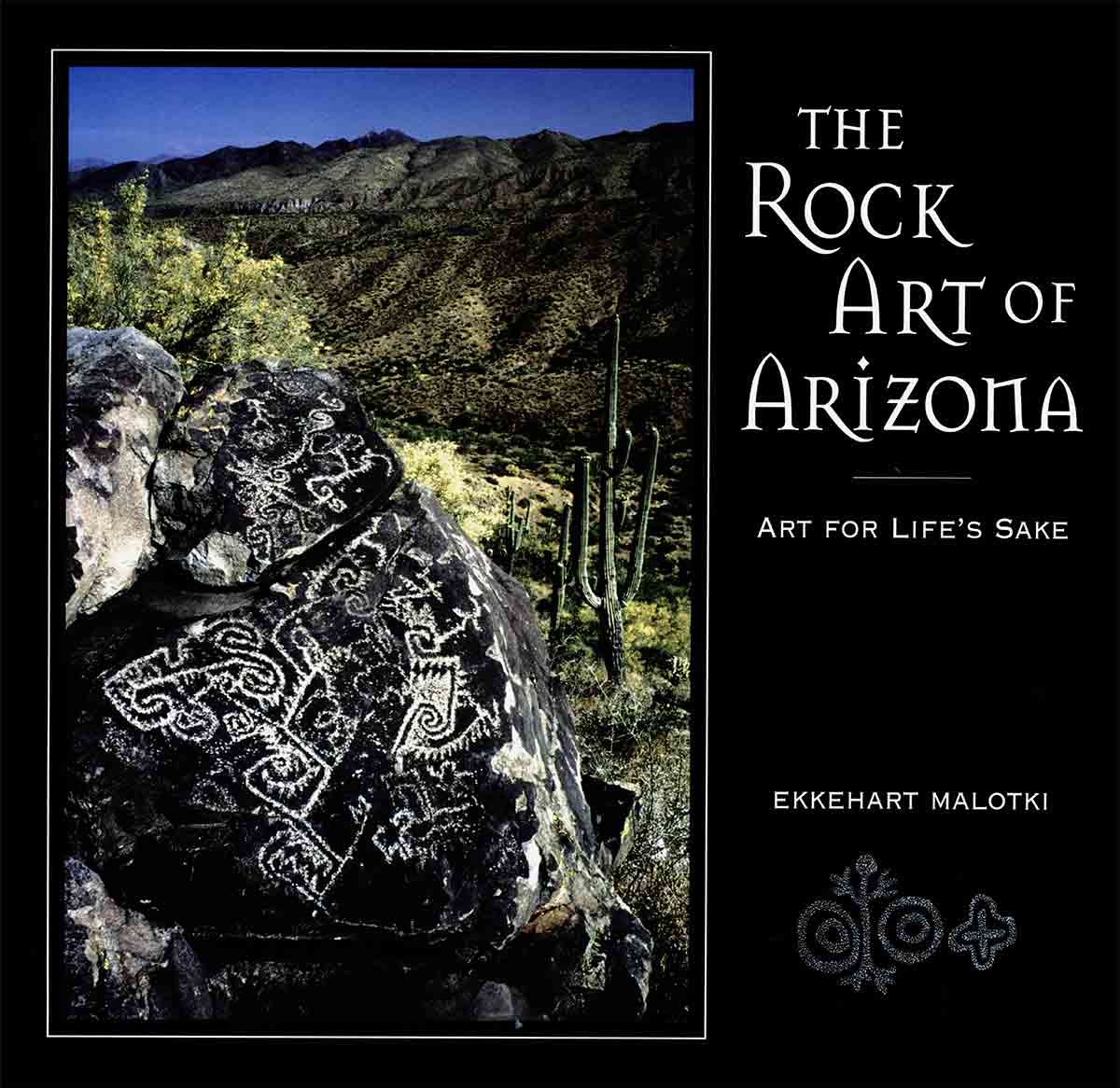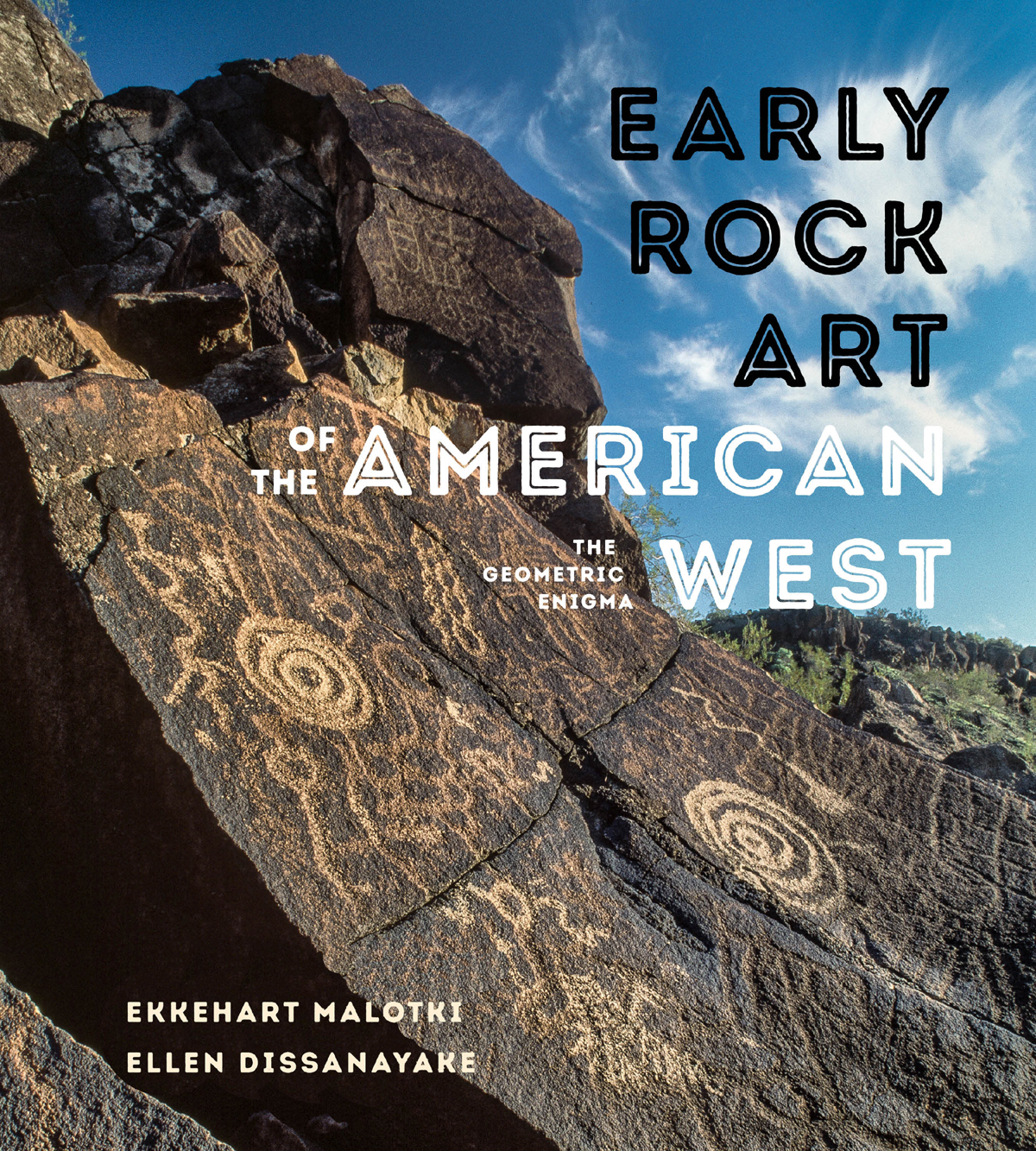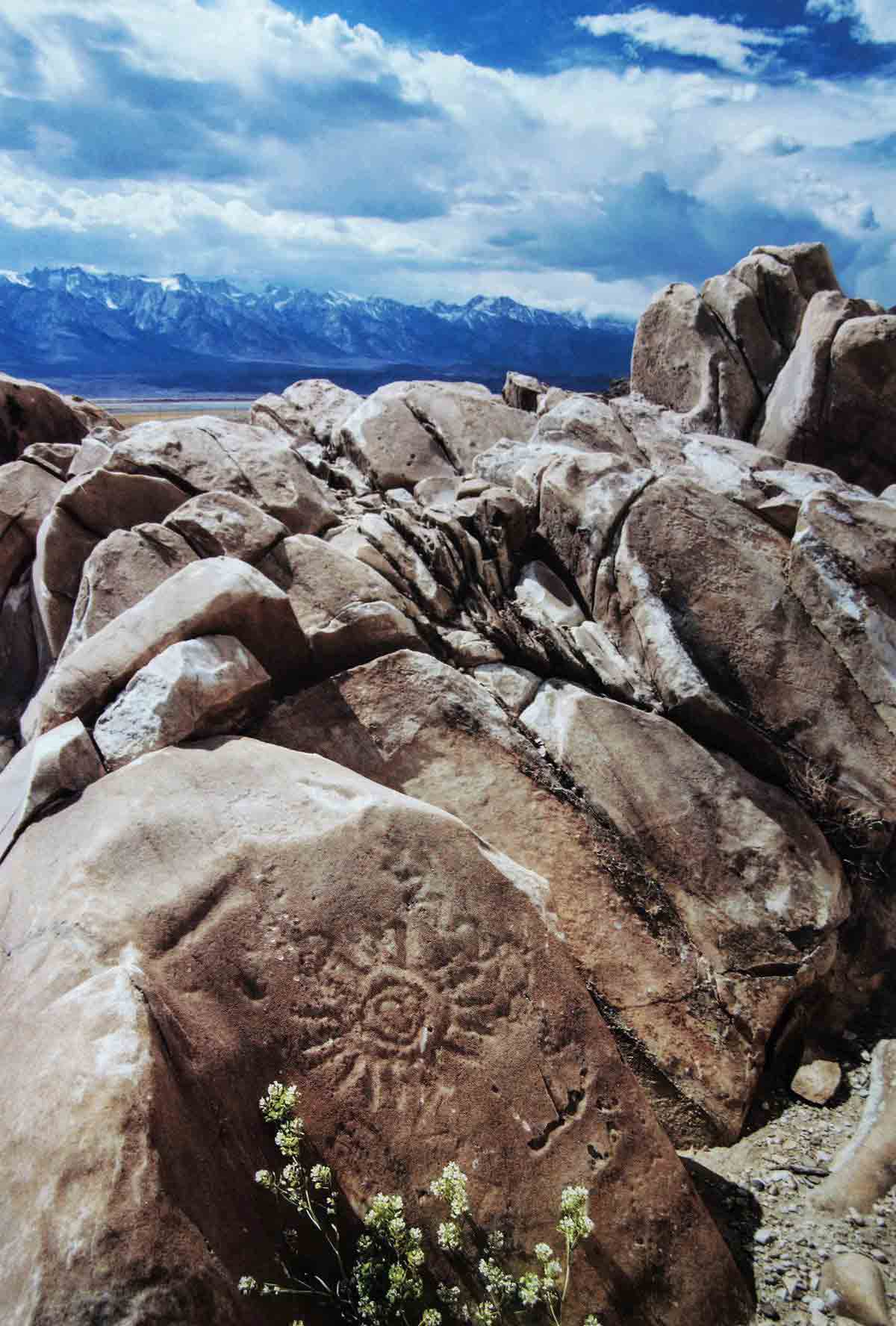


With an estimated 6,000 to 8,000 sites spread throughout its canyons, mountains and deserts, the Grand Canyon state of Arizona constitutes one of the premier rock art theaters in the world. Consisting primarily of engraved images (petroglyphs) on sandstone and basalt, but also offering paintings (pictographs) under overhangs, and ground figures (geoglyphs) on desert pavements, Arizona's rock art truly commands awe and respect. This book, in a comprehensive survey, presents the full gamut of the state's impressive open-air art from its earliest beginnings until more recent manifestations in the historic era. Though The Rock Art of Arizona contains more than 380 color photographs, over 130 drawings, and numerous charts and maps, it goes beyond the usual bounds of a lavishly illustrated coffee-table book.
In addition to describing the various Archaic and post-Archaic rock art styles and traditions in the state's fifteen counties, author Ekkehart Malotki focuses on providing insights into what may have compelled Arizona's ancestral artists to produce the imagery and what functions it may have had in their daily lives. At the same time, he acknowledges the severe limitations of scientifically dating the paleoart, the subjective biases involved in stylistic classification, and the ultimate mystery of its meaning. Within the confines of this explanatory framework, drawing primarily on novel ideas derived from the field of evolutionary psychology and the concept of human universals, he argues that rock art, in a broadly defined context of art and ritual, had beneficial adaptive value in the human struggle for survival and thus can truly be perceived as art for life's sake.
The first thing I noticed about this beautifully presented book is the subtitle. Straight away, the author establishes his intriguing hypothesis, which he goes on to explain with clarity and eloquence. Indeed, ‘The Rock Art of Arizona: Art for Life’s Sake’ helps redress the imbalance of coverage of rock art in North America. This is done in a way that will more than satisfy novices, aficionados and experts alike.
For me, the tantalizing aspect of the rock art of Arizona - the most ancient of which is thought to date to the early Holocene - revealed by this publication is that it is composed predominantly [but not exclusively] of abstract geometric markings. Not only that, but how similar they are to other ancient geometric markings found throughout the world. Malotki addresses this issue, referring to them as ‘phosphenes’ - non-figurative motifs that act as visual archetypes, or entoptic phenomena, and which are experienced by all humans and which are impermeable to cultural conditioning. These, the author argues, are hard-wired into our visual system. These ‘human universals’ - which are not static but dynamic - seem to endorse Stephen Oppenheimer’s ‘Journey of Humankind’ Genetic Map, which clearly illustrates, as Malotki suggests, that modern humans in fact are one biological family & one species, a point that anthropologists, among others, are only just beginning to fathom.
The book carefully considers and explains all aspects of rock art in this context, from techniques to dating, from style to iconography, all of which are shown with their strengths and weaknesses. But above all, Malotki has the courage to tackle the thorny subject of their purpose and meaning. Because without this, he argues, rupestrian research will become a ‘sterile endeavour’.
Is their true and original meaning unknowable? Whilst there is no single global model, the author argues that rock art can be seen as a universal attempt to communicate - to some form of supernatural force - a deep desire for survival. With the ur religion of all hunting peoples, at the core lies an individual or ritual specialist who, on behalf of his group, acts as an intermediary between the mortal world and the spiritual world. Employing altered states of consciousness - or trance - they access the spirit world. Afterwards, they commemorate their visionary experiences by creating replicas of their hallucinated images. These not only preserve their trance visions [in the art] but they may also act as portals to return to the spirit world.
The author adopts the "artification hypothesis," as developed by ethologist Ellen Dissanayake, that treats art as instances of a universal desire to ‘make important things special’ (or to "artify"). Artifying is intended to create certainty in a world of uncertainty, to create ‘cultural super order’ in an attempt to counter entropy. This is humankind’s earliest stamp on the planet, changing it from a ‘landscape’ to a ’mindscape’ - the regular geometric motifs represent an understood order, and therefore the rock art sites themselves become shrines within this ‘mindscape’. Control is imposed in a dangerous world, perhaps as the Inuit intended by placing their inuksuit stone structures within the Arctic landscape.
‘The Rock Art of Arizona: Art for Life’s Sake’ reveals one of the most impressive collections of rock paintings and engravings I have seen, and to have it photographed and presented so professionally is a rare pleasure. But this book provides valid theories and plausible explanations of rock art that go well beyond the Arizona state boundaries - they have a global relevance. It also provides the art itself with a relevance; it seems entirely feasible that art truly is for life’s sake. I cannot recommend this more highly.
A comprehensive book on the rock art of Arizona was missing. Ekkehart Malotki has now provided it and he has done it beautifully. Thanks to his superb photographs, readers will be amazed at the wealth and splendor of what is undoubtedly one of the most impressive collections of rock art paintings and engravings in the world, set in incredible landscapes that played a vital part in their significance. The author also stresses the various functions and meanings of the art insofar as we can comprehend them. As he did so simply and clearly, general readers, rock art enthusiasts and specialists will all be deeply interested in this landmark publication.
A comprehensive book on the rock art of Arizona was missing. Ekkehart Malotki has now provided it and he has done it beautifully. Thanks to his superb photographs, readers will be amazed at the wealth and splendor of what is undoubtedly one of the most impressive collections of rock art paintings and engravings in the world, set in incredible landscapes that played a vital part in their significance. The author also stresses the various functions and meanings of the art insofar as we can comprehend them. As he did so simply and clearly, general readers, rock art enthusiasts and specialists will all be deeply interested in this landmark publication.
Dr Jean Clottes
President of IFRAO (international Federation of Rock Art Organizations)
Available now from the University of Washington Press
The earliest rock art - in the Americas as elsewhere - is geometric or abstract. Until Early Rock Art in the American West, however, no book-length study has been devoted to the deep antiquity and amazing range of geometrics and the fascinating questions that arise from their ubiquity and variety. Why did they precede representational marks? What is known about their origins and functions? Why and how did humans begin to make marks, and what does this practice tell us about the early human mind? Rayed concentric-circles theme on dolomite marble, California. Photographed by Ekkehart Malotki.
With some two hundred striking color images and discussions of chronology, dating, sites, and styles, this pioneering investigation of abstract geometrics on stone (as well as bone, ivory, and shell) explores its wide-ranging subject from the perspectives of ethology, evolutionary biology, cognitive archaeology, and the psychology of artmaking. The authors’ unique approach instills a greater respect for a largely unknown and underappreciated form of paleoart, suggesting that before humans became Homo symbolicus or even Homo religiosus, they were mark-makers - Homo aestheticus.
“In this welcome book a long-neglected rock art tradition is examined at length. The work is so wide-ranging that any reader will also learn about many important anthropological concepts. Last but certainly not least, splendid photographs accompany the texts throughout.” - Dr Jean Clottes, author of What Is Paleolithic Art?
“Ellen Dissanayake is always fascinating on the subject of aesthetics. Here she turns her attention to early rock art and, once again, has produced an original study that encourages us to look with new eyes at the fundamental human impulse to make marks.” - Desmond Morris, author of The Biology of Art and The Naked Ape
“A tribute to the artistic and intellectual achievements of Paleoamericans. Scholarly and innovative, sophisticated yet accessible, and with a wealth of breathtaking pictures.” - Tilman Lenssen-Erz, African Archaeology, Institute of Prehistoric Archaeology, University of Köln
“Presents new ideas on the origin and importance of art to all human cultures and shows that the neglected geometric rock art of the American West has an intriguing and essential story to tell.” - Paul Taçon, chair in Rock Art Research, Griffith University
EKKEHART MALOTKI is professor emeritus of languages at Northern Arizona University. He is the author of The Rock Art of Arizona: Art for Life’s Sake and Stone Chisel and Yucca Brush: Colorado Plateau Rock Art.
ELLEN DISSANAYAKE is an independent scholar, author, and lecturer. She is the author of Art and Intimacy: How the Arts Began; Homo Aestheticus: Where Art Comes From and Why; and What Is Art For?
Publication details:
ARCHAEOLOGY; ANTHROPOLOGY; HISTORY / WESTERN HISTORY
314 pp., 200 illus., 193 in color
34.95 paperback, 9780295743615
July 2018
TO ORDER AT 30% DISCOUNT
Call Hopkins Fulfillment Service at
1-800-537-5487 or order online. Use promo code WST30
.
Canada: University of British Columbia Press
World: Combined Academic Publishers
→ Subscribe free to the Bradshaw Foundation YouTube Channel
→ America Rock Art Index
→ The Rock Art of Baja California
→ Baja On Film
→ California Rock Art Foundation
→ Baja In Search of Painted Caves
→ Baja Great Murals Gallery
→ Sierra de San Francisco
→ Baja 2018 Expedition
→ The Rock Art of the Lower Pecos Canyonlands
→ Color Engenders Life
→ The Rock Art of Arizona
→ The Rock Art of Nevada
→ Coso Sheep Cult of East California
→ Coso Range Rock Art Gallery
→ The Rock Art of Moab Utah
→ The Rock Art of the Oregon Territory
→ RAN - USA Colloquium 2018
→ Removal & Camouflage of Graffiti
→ Graffiti Dates & Names
→ Vandalised Petroglyphs in Texas
→ Preserving Our Ancient Art Galleries
→ Bradshaw Foundation
→ Rock Art Network
















